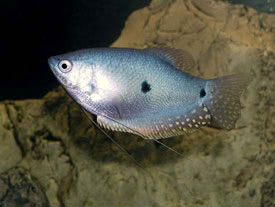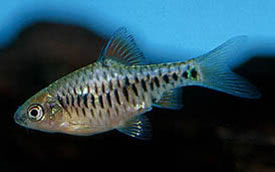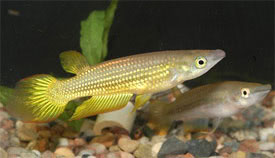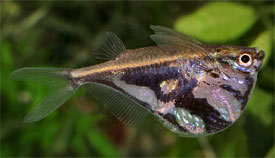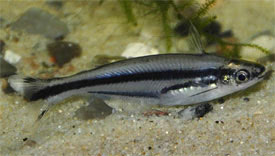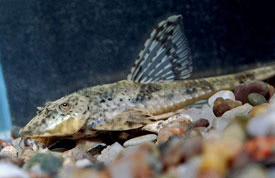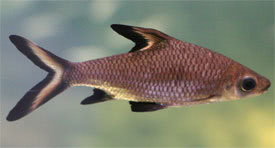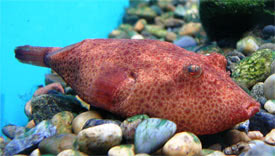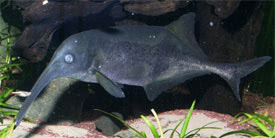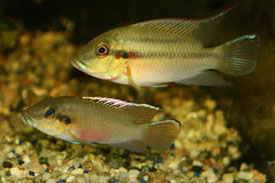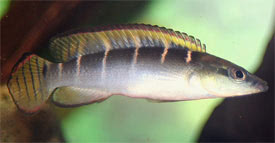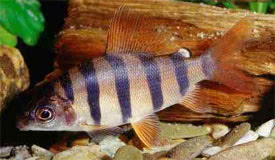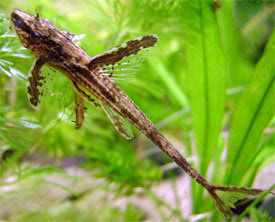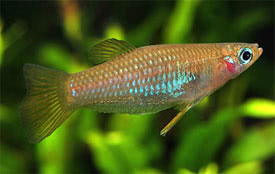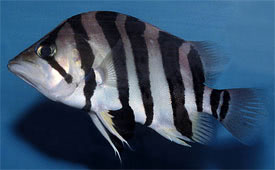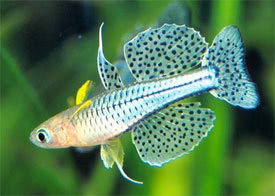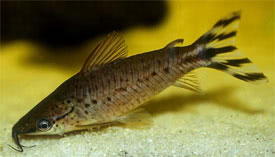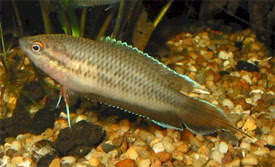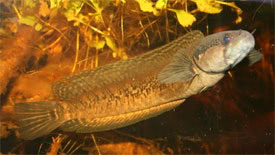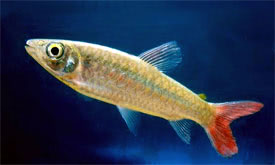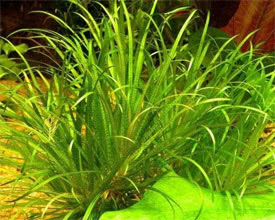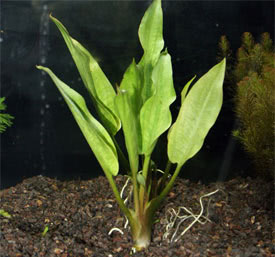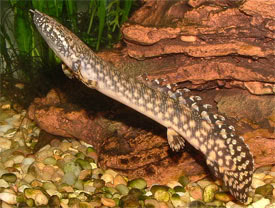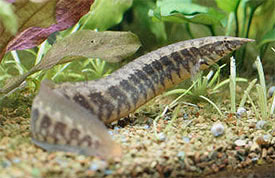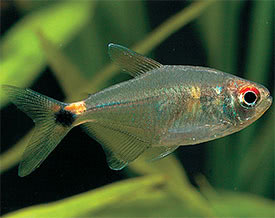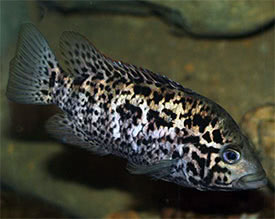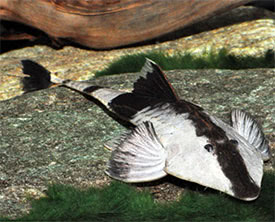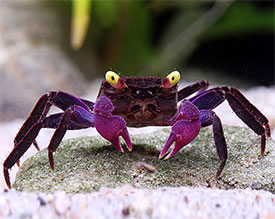
 Magyarul / Hungarian
Magyarul / Hungarian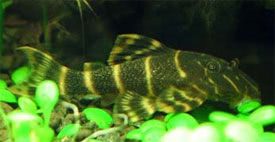
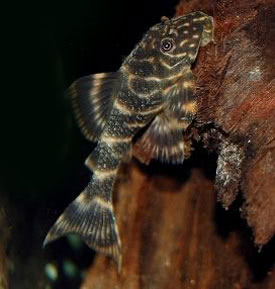


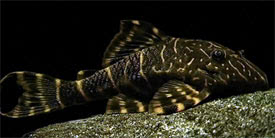
- Scientific name: Panaqolus maccus
- Synonyms: Panaque maccus
- Common name: Clown Pleco, Ringlet Pleco, L-104 catfish, L-162 catfish
- Group: Catfishes
- Habitat: South America; Venezuela, Rio Orinoco Basin
- Size: 10 cm
- Biotope: Inhabits in Andean whitewater rivers, among roots and driftwood snags along the riverbanks.
- Social behavior: Peaceful and shy, but a little territorial. Peaceful towards other species.
- Diet: Herbivorous. A wood-eating catfish, therefore bog wood is necessary in their tank. They eat the wood itself, and the „Aufwuchs” that forms on the wood. The fishes also eat vegetables, algae wafers and spirulina and meaty foods like shrimp or fish fillet.
- Breeding: Hard
- Tank: Minimum 80 litres
- Population: 4-5 fish for 180 litres
- Decoration: The substrate should be fine gravel or sand. The tank should be decorated with several different types of driftwood and with numberous hiding places. Use dim lighting and good filtration.
- Temperature: 22-30 °C
- pH: 5,5-7,5
- Hardness: 7-20 NK°
- Lifespan: 8-10 years
Description: The base colour of Panaque maccus is light brown to black, with thin, white or yellow stripes and spots. The belly area is white. The fins are also striped like the main body. The pattern of the individual fish varies, depending on the environment and the mood of the fish. Their striped brown and cream coloured body provides excellent camouflage in their natural habitat. It is best to keep them in soft, slightly acidic to neutral water, with good oxygenation and a good amount of currents, but they can adapt to harder, more akaline water as well. Males grow elongated odontodes during the breeding season on the back of their body and on their gill-covers. Females are a little bigger, and their belly is full and round.
For breeding the fish, you should imitate the season changes in their natural habitat. During the dry season the water temperature is 26-27 °C, the pH 7.5 and the water is medium hard. In the wet season the water is cooler, softer and has a neutral pH due to the heavy rains. In preparation for breeding, add a power head and air stone to the tank, unplug the heater, and begin making 20 percent daily water changes with cool rain or reverse osmosis water. After four water changes, the water temperature should be 21-22 °C. At this point plug the heater back in and wait for the spawn. It may take a few cycles to get the fish spawning. Provide various sized spawning caves made from PVC or slate. Hide the spawning caves along the back of the tank behind the driftwood. The female lays quite a few (usually 20-25), relatively large eggs in the male’s cave. The eggs hatch after 5 to 6 days, but the fry stays in the cave until they are 20-25 days old.
















